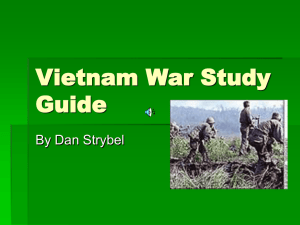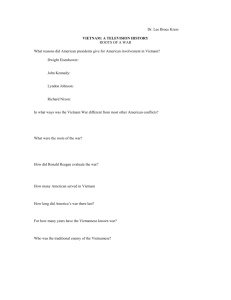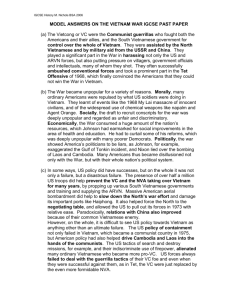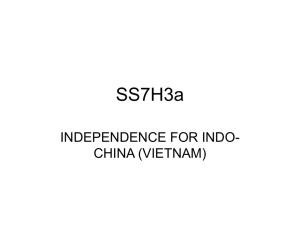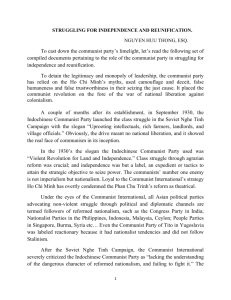Vietnam War Reading
advertisement
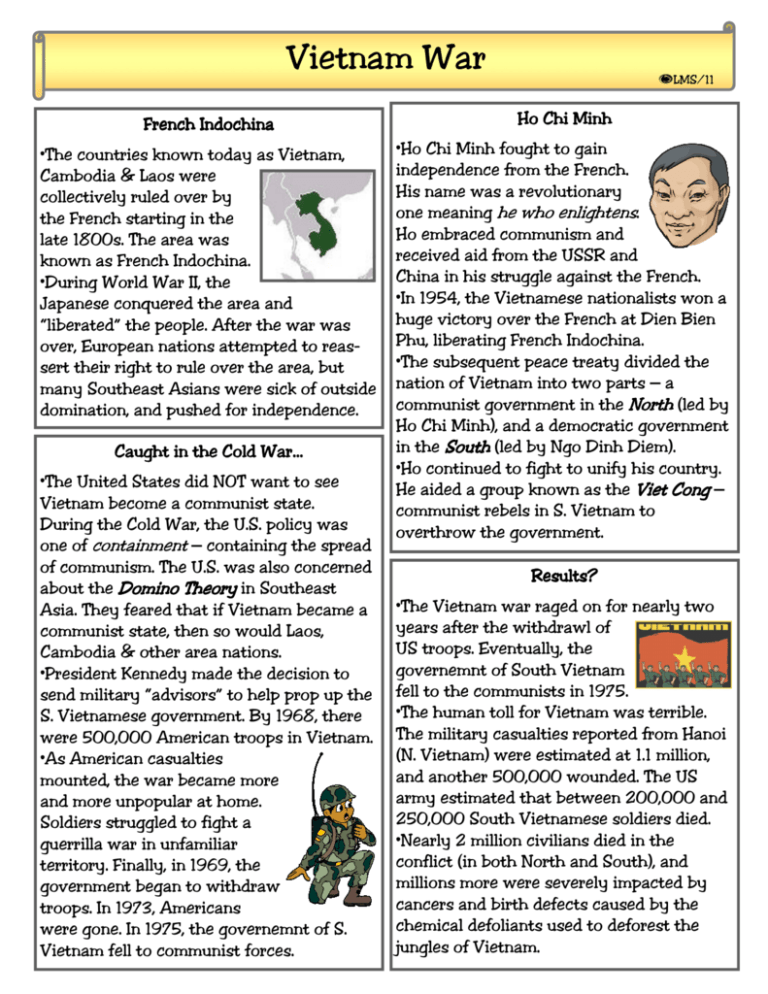
Vietnam War SLMS/11 French Indochina Ho Chi Minh •The countries known today as Vietnam, Cambodia & Laos were collectively ruled over by the French starting in the late 1800s. The area was known as French Indochina. •During World War II, the Japanese conquered the area and “liberated” the people. After the war was over, European nations attempted to reassert their right to rule over the area, but many Southeast Asians were sick of outside domination, and pushed for independence. •Ho Chi Minh fought to gain independence from the French. His name was a revolutionary one meaning he who enlightens. Ho embraced communism and received aid from the USSR and China in his struggle against the French. •In 1954, the Vietnamese nationalists won a huge victory over the French at Dien Bien Phu, liberating French Indochina. •The subsequent peace treaty divided the nation of Vietnam into two parts — a communist government in the North (led by Ho Chi Minh), and a democratic government in the South (led by Ngo Dinh Diem). •Ho continued to fight to unify his country. He aided a group known as the Viet Cong — communist rebels in S. Vietnam to overthrow the government. Caught in the Cold War… •The United States did NOT want to see Vietnam become a communist state. During the Cold War, the U.S. policy was one of containment — containing the spread of communism. The U.S. was also concerned about the Domino Theory in Southeast Asia. They feared that if Vietnam became a communist state, then so would Laos, Cambodia & other area nations. •President Kennedy made the decision to send military “advisors” to help prop up the S. Vietnamese government. By 1968, there were 500,000 American troops in Vietnam. •As American casualties mounted, the war became more and more unpopular at home. Soldiers struggled to fight a guerrilla war in unfamiliar territory. Finally, in 1969, the government began to withdraw troops. In 1973, Americans were gone. In 1975, the governemnt of S. Vietnam fell to communist forces. Results? •The Vietnam war raged on for nearly two years after the withdrawl of US troops. Eventually, the governemnt of South Vietnam fell to the communists in 1975. •The human toll for Vietnam was terrible. The military casualties reported from Hanoi (N. Vietnam) were estimated at 1.1 million, and another 500,000 wounded. The US army estimated that between 200,000 and 250,000 South Vietnamese soldiers died. •Nearly 2 million civilians died in the conflict (in both North and South), and millions more were severely impacted by cancers and birth defects caused by the chemical defoliants used to deforest the jungles of Vietnam.
![vietnam[1].](http://s2.studylib.net/store/data/005329784_1-42b2e9fc4f7c73463c31fd4de82c4fa3-300x300.png)
